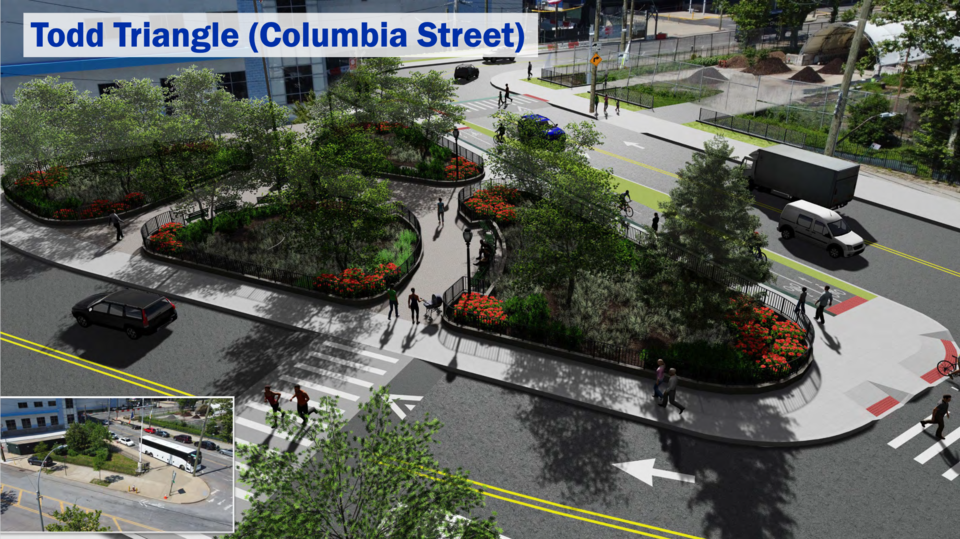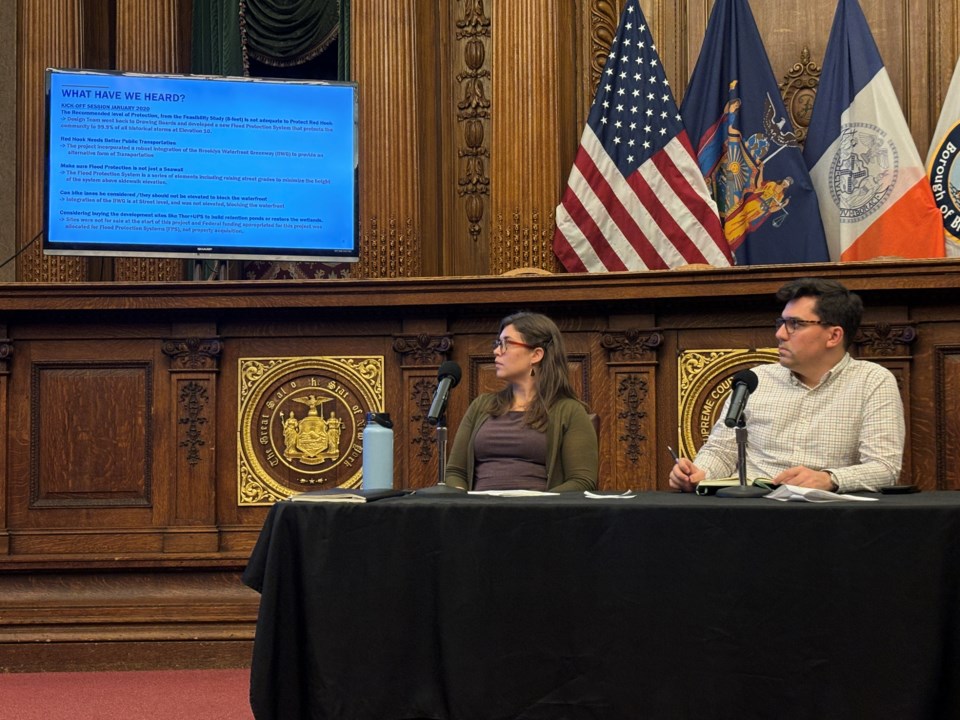A decade in the making, the neighborhood-wide flood resiliency project planned for Red Hook inched closer to approval and moved to the desk of the Brooklyn Borough President last week.
At a public hearing at Borough Hall on Feb. 28, officials updated residents about the $100 million Red Hook Coastal Resiliency Project, which aims to reduce floods from coastal storm surges and sea level rise along the neighborhood’s western waterfront.
The project would install permanent flood walls and moveable barriers, as well as elevate streets. When put together, these elements bring vulnerable waterfront areas up to a 10-foot elevation during storms. While these tools would not protect the area from another Superstorm Sandy – which exceeded the 100-year floodplain boundaries by 53 percent – they would offer protection from a majority of expected storms and predicted sea level rise.
Joe Menzer, the director of New York operations at NV5, the consultant on the project, detailed the flood protection features set to run along Atlantic Avenue and Beard Street.
“The system of flood walls, raised street grades, deployable flood gates, and supporting infrastructure all work together with the existing topography,” Menzer said.
These include permanent concrete flood walls up to four feet from the sidewalk, as well as manual flood gates that can be rolled out or flipped up. Local streets will also be regraded, or reconstructed at higher elevations, and repaved.
“So when all these pieces are linked together, you get a flood protection system that surrounds the entire neighborhood to elevation 10,” Menzer said.

The plan requires the city’s permission to acquire easements on 20 private lots in order to construct and maintain these features. It also includes enhancements to the Brooklyn Waterfront Greenway, at the cost of some parking spaces, and an expansion of Todd Triangle Park to increase open public space.
This step in the city’s Uniform Land Use Review Procedure (ULURP) includes a review period by Borough President Antonio Reynoso and the submission of a joint application for city approval by four city agencies – the Departments of Design and Construction, Transportation, Parks and Citywide Administrative Services.
Red Hook is a mix of residential and industrial areas, and the majority of the waterfront is privately owned. More than one resident raised concerns at the hearing about the project’s planned removal of the Red Hook's cobblestone streets.
“Cobblestone is the reason why I moved to this neighborhood 14 years ago,” said Nathan Shepherd. “I find it a little bit weird that we're going to remove that completely.”
According to Eric Ilijevich, the director of coastal resiliency from the Department of Design and Construction, the cobblestones pose issues of maintenance and access. He said the Department of Transportation looked into reusing the cobblestones, but does not currently have the space to store them.
“They cannot be retained,” Ilijevich said. “DOT looked into options to reuse them, but does not currently have the real estate to store them.”
Menzer said the cobblestones are highly compacted, so the standard pavement of New York City Streets they plan to install would not be a loss in permeability.
Victoria Alexander, a member of the Red Hook Business Alliance, shared concerns submitted by Community Board 6. These include needed sewer and stormwater upgrades and the risk of a ‘bathtub effect’ from the new infrastructure, in which protected areas flood from rainfall and fail to properly drain.
According to Ilijevich, the Department of Environmental Protection is working on separate projects to address flooding from rainfall events, but drainage protection is largely out of the resiliency project’s scope.
As it stands, the Red Hook Coastal Resiliency Project is in the final stages of design, with a review scheduled at the end of March. Once this phase of the land use process is finished, barring the borough president’s review period and the city’s approval, then construction and maintenance of the flood protection system can finally begin.




